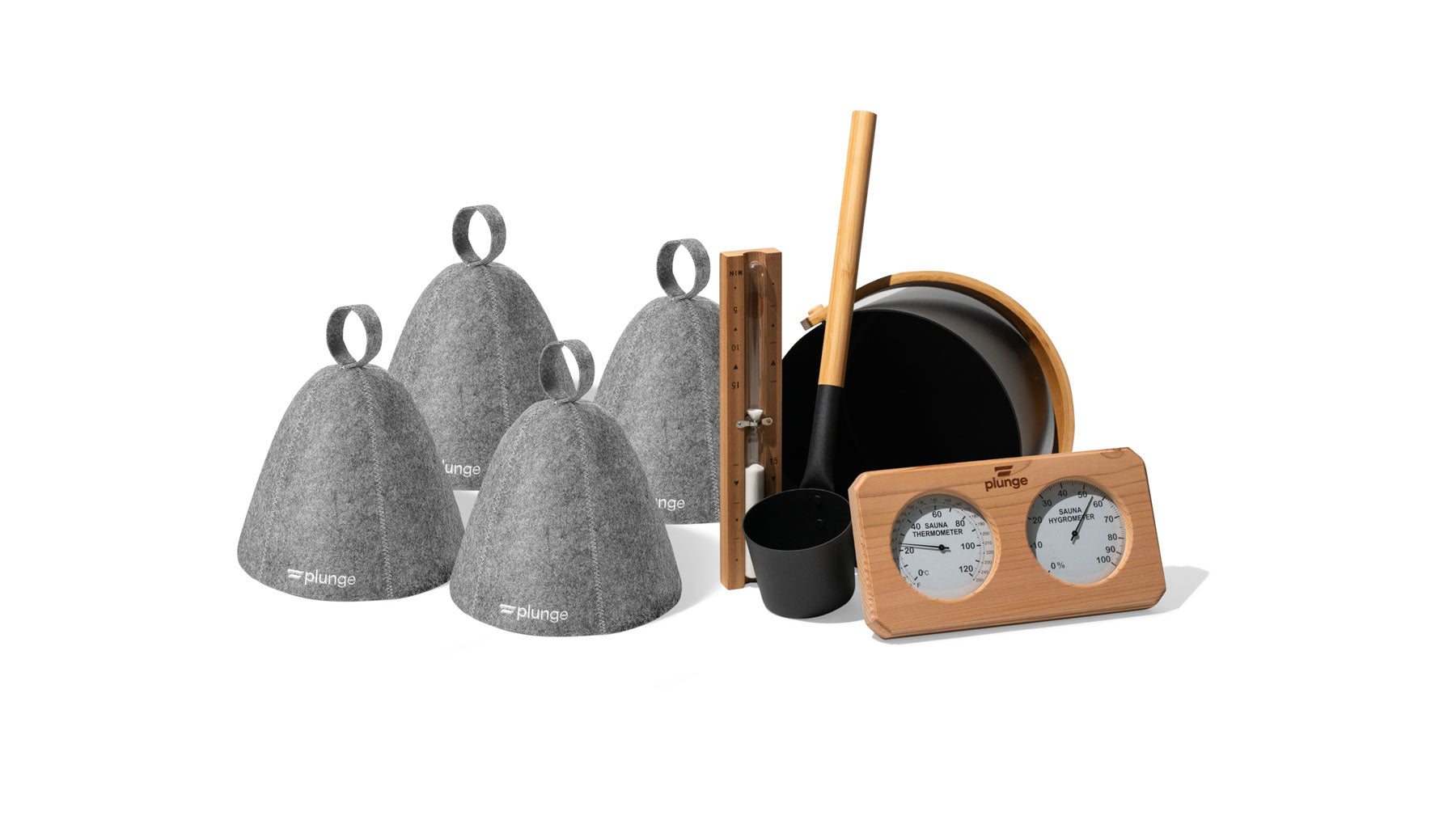
What is the RICE Method & How Does it Aid Injury Recovery?
Sports injuries can be frustrating setbacks for athletes at all levels of competition, from professionals to beer leagues. They disrupt schedules and impact daily activities and overall well-being. Treating injuries early with methods like RICE can significantly help reduce swelling, ease pain, and accelerate recovery.
What Does RICE Stand for?
RICE stands for Rest, Ice, Compression, and Elevation. This technique’s goal is to reduce swelling, ease pain, and speed up healing — especially for athletic injuries. Let’s explore each of the components in more depth:
1. Rest
The first step in the RICE regimen is rest — a critical component in any recovery or healing process. When an athlete has an injury, continuing to train or compete can delay and slow healing, increasing the likelihood of further damage. By resting, the body can initiate the healing process without additional stress on the injured area. This inactivity helps stabilize the injury, reduce pain and swelling, and is essential for preventing complications that could sideline an athlete for an even longer period.
2. Ice (or Cold Therapy)
Applying ice to an injury limits inflammation and numbs the pain — important elements in the early stages of healing. For athletes, the application of cold therapy extends beyond localized icing and incorporates methods like full-body immersion in ice baths. This not only targets specific injured areas but also contributes to overall muscle recovery and can offer additional benefits like reducing DOMS and better circulation. Embracing cold therapy helps accelerate the healing process, equipping athletes for a quicker return to peak physical condition.
Can I use Ice for More Than Two Days with RICE?
Prolonged ice for longer than a day or two can actually slow healing by reducing the blood flow to the affected area. Instead, opt for shorter periods of icing or cold therapy. This can be done with ice packs for localized treatment, or ice baths for larger areas.
Learn more about the muscle recovery benefits of ice baths here.
3. Compression
Compression is another way of reducing swelling and stabilizing the injury. This is particularly important for athletes, where continued physical demands might exacerbate sprains, tears, fractures, and more. Applying a snug (yet comfortable) wrap or sleeve around the injured area can keep swelling to a minimum, promoting more efficient healing.
4. Elevation
The final step of the RICE method, it’s important to raise the injured area above heart level to continue to manage swelling. Elevating the injured part of the body can be especially effective after workouts or physical therapy sessions because it counteracts the gravitational pull that may exacerbate swelling.
How Can the MEAT Method Improve Injury Recovery?
However, the RICE method isn’t the only food-inspired acronym for injury recovery. The MEAT method (Movement, Exercise, Analgesics, and Treatment) can be an alternative to RICE. It emphasizes active recovery through gentle movement and exercise, supported by analgesics and specific treatments to promote faster healing and prevent future issues.
1. Movement
Incorporating gentle movement into athletic recovery is impactful because controlled movements of the injured area can prevent stiffness and promote blood flow. Both factors are essential for delivering additional nutrients and oxygen needed for healing. For athletes, this helps maintain a moderate level of physical conditioning, resulting in a smoother transition back to full training.
What Kind of Movement is Okay with MEAT?
The key to active recovery is pain-free movements of the injured area like range-of-motion exercises (extensions, rotations, etc.) or light strengthening activities. If your muscles feel tight, it might be worth looking at heat therapy. Heat can reduce joint stiffness and relax muscles to make these exercises easier — and wellness products like saunas can provide a full-body heat immersion from home to help.
Learn more about the workout recovery benefits of saunas and heat therapy here.
2. Exercise
Similar to movement, the exercise step involves rehabilitative activities designed to gradually restore strength, flexibility, and endurance to the injured area (without causing further damage). These exercises should be tailored to the athlete’s situation and injury to ensure a recovery plan that aligns with the demands of their sport.
3. Analgesics
Using analgesics (painkillers) allows for more comfortable and effective participation in rehabilitation exercises. For athletes, managing pain enables a more active involvement in the recovery process and promotes a positive mental state — crucial for a quick return to doing what they love.
NOTE: It's important, however, to use these medications carefully and under medical guidance to avoid masking symptoms that could lead to worsening the injury.
4. Therapy/Treatment
This area of the recovery plan encompasses a variety of actions and techniques aimed at promoting healing and restoring function. For athletic recovery, this might include:
- Physical Therapy: Utilizing targeted exercises and manual therapy techniques to improve movement and reduce pain.
- Occupational Therapy: Focusing on adapting actions and environments to ensure a safe return to training and everyday activities.
- Temperature Therapy: Employing cold, hot, and contrast (alternating cold and hot) treatments to manage pain, reduce inflammation, and stimulate blood flow. Temperature therapy has a wealth of benefits for your recovery, and even beyond the gym. Learn more about the health benefits of cold plunging and the reasons to use a sauna for enhanced wellness.
Each of these may be selected with the athlete's specific needs and recovery goals in mind, establishing an individualized plan that addresses the unique demands of their sport and injury.
Which is Better? RICE vs. MEAT for Injury Treatment
Choosing between these two recovery philosophies depends on the injury type and recovery phase. RICE is typically best for immediately after acute injuries like sprains, emphasizing passive recovery to reduce swelling and pain.
Meanwhile, MEAT suits more active recovery phases, especially for muscle or tendon injuries where movement supports healing. Notably, both methods incorporate temperature therapy as a key component, emphasizing its importance in effective recovery.
Boost Your Recovery Process with Cold Water Therapy
Whether you're an athlete eager to get back on the field after an injury or a coach, rehab center specialist, or sports facility owner dedicated to supporting optimal recovery processes, understanding the nuances between the RICE and MEAT methods can significantly impact performance and well-being.
Looking for a way to offer your players or patients more comprehensive recovery solutions? Integrating advanced recovery technologies like cold plunge therapies into your offerings can enhance the recovery experience. To explore the benefits and see how you can incorporate these therapies into your practice, learn more about Plunge for Business today.
Medical Disclaimer: The information contained in this post is for informational and educational purposes only. It is not intended to provide medical advice or to take the place of such advice or treatment from a personal physician. All readers/viewers of this content are advised to consult their doctors or qualified health professionals regarding specific health questions or before embarking on any new health or wellness routine, including saunas and cold plunging. Neither the author(s) nor the publisher of this content take responsibility for possible health consequences of any person or persons reading or following the information in this educational content. All viewers of this content, especially those taking prescription or over-the-counter medications, should consult their physicians before beginning any cold plunging routine or other health or wellness program.
























